Preparations of Nag Panchami: Painting the serpent
Nag Panchami emphasizes the peaceful coexistence of people and nature with its cultural and spiritual significance. It acts as a reminder of the significance of treating all living things with respect and preserving ecological balance.

This traditional Hindu festival honors serpents and snakes because they are revered in Hindu mythology and culture. The celebration takes place on the fifth day of the Shrawan lunar month, which normally falls in July or August. The term ‘Nag’ refers to snakes, and ‘Panchami’ means the fifth day.

Devotees pray to and worship snake deities during Nag Panchami in order to protect themselves from snakebites and other related risks. Hinduism views snakes as powerful, holy beings as a sign of protection, consciousness, and alertness.

Narendra Chitrakar, 62, has been painting Naga pictures since he was 11, learning from his father and his grandfather before that. This is his ancestral business. He was born in Machhindra Bahal, Masan Galli, Ason, Kathmandu. The colors used in the paintings are called ‘kacha rang’ in the Newari Language, which means raw color. He creates five to six designs of paintings of different sizes. Small posters are more popular and are sold in greater numbers than smaller ones. He sells 2500-3000 handmade posters every season, with prices ranging from five rupees to Rs 50. Apart from that, he also paints color on the statue of Rato Machhindranath and other Hindu deities.

One of the most famous myths about this day is about Lord Krishna defeating serpent Kaliya. According to the story, Kaliya had taken residence in the Yamuna River, poisoning its waters and terrorizing the inhabitants. Krishna, as a young boy, danced on Kaliya’s many heads, forcing the serpent to surrender and promise to leave the river. This story symbolizes the victory of good over evil and since that day Nag Pachami was celebrated.
Shrawan prayer at Pashupatinath
In Hinduism, the month of Shrawan which is the fourth month of the Hindu calendar holds special significance as it’s dedicated to Lord Shiva. Devotees observe fasting, offer prayers, and visit temples during this month to seek blessings and show their devotion. It’s believed that prayers and offerings made during Shrawan are especially auspicious and can lead to the fulfillment of one’s wishes.

The mondays of Shrawan, known as ‘Shrawan Somvar,’ are particularly important for Shiva worship. People often adorn themselves with holy ash and offer water, milk, and other offerings to Lord Shiva during this month.

The Pashupati Arati is a daily ritual that takes place at the Pashupatinath Temple in Kathmandu, Nepal. It’s a significant religious ceremony held in honor of Lord Pashupatinath.

In Shrawan, every evening, the temple complex comes alive with the mesmerizing Pashupati Arati. Thousands of devotees gather to witness the sacred ritual where oil lamps are lit, accompanied by chanting, prayers, and the ringing of bells. The Arati is performed by the temple priests, and it’s believed that participating in or witnessing this ritual during Shrawan is especially auspicious.
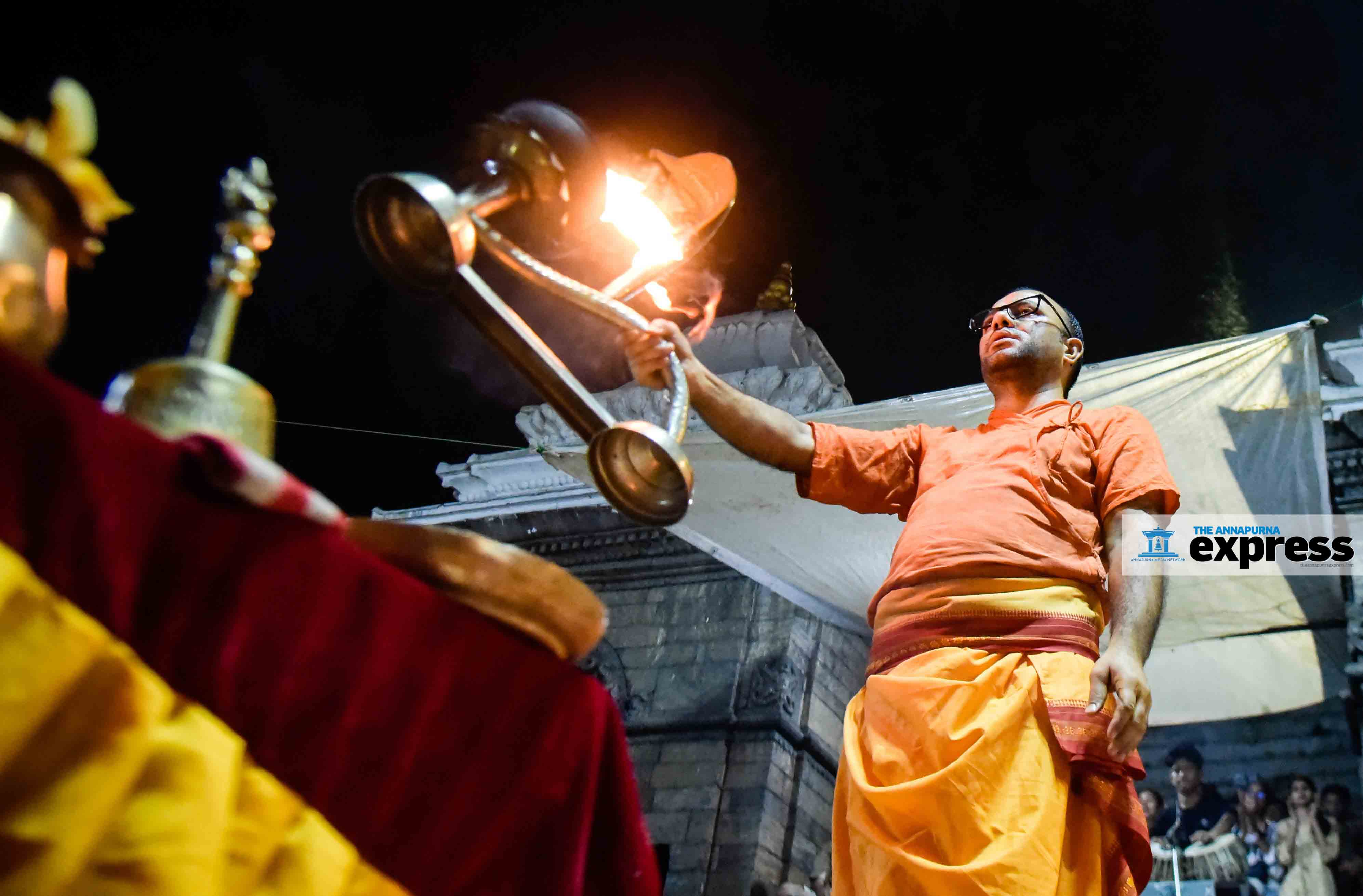
There are many legends and myths associated with the significance of the month of Shrawan. One of the popular myths is that the daughter of Dakch, Sati Devi sacrificed her life and was reborn as Parvati, the daughter of the Himalayan king. She wanted to marry Lord Shiva and went through tough fasting for the whole month. Pleased by the devotion of Parvati, Shiva fulfilled her wish. This is why women wear green clothes and fast in this month believing they will get a husband like Shiva.

Another mythological story is the churning of the ocean (Samudra Manthan) by the Devas (gods) and Asuras (demons) to obtain the nectar of immortality (Amrit). During this churning, various divine gifts emerged from the ocean, including poison. To prevent the poison from spreading and harming the universe, Lord Shiva drank the poison. As a result, his throat turned blue, earning him the name ‘Neelkantha’ (the blue-throated one). In commemoration of this event, devotees offer prayers to Lord Shiva during the month of Shrawan.


Tale of a weaver bird
Weavers are renowned for their remarkable nest-building skills. These small birds create intricate nests, often resembling woven baskets, using grasses, leaves, and various materials. These nests serve as excellent protection from predators and harsh weather conditions.

The tale of a weaver underscores the creativity and ingenuity of nature, inspiring humans to cherish and learn from the world around them. It also highlights how observing animal behavior can spark innovative ideas in human architecture and design.

Within weavers’ colonies, complex social structures exist, with dominance hierarchies among males impacting their access to resources and nesting sites.

Some weaver bird species nest in colonies, resulting in a captivating spectacle of numerous nests in close proximity. This communal nesting behavior offers collective vigilance against predators, ensuring better protection.

Similar to humans, male weavers showcase their nest-building prowess as a courtship display to attract females. The more elaborate the nest, the higher the chances of attracting a mate.

Females evaluate males based on the quality of their nests, as it signifies the male’s genetic fitness and ability to provide a safe environment for their offsprings.

Weavers use various vocalizations to communicate with one another. These sounds convey warnings about predators, signal social interactions, and establish territorial boundaries.

Certain weaver bird species are migratory, embarking on long journeys to find suitable breeding and feeding grounds. Every year, when spring season starts, weavers migrate from the Tarai region of Nepal to the bank of Balkhu river in Kathmandu. They reproduce and return in mid-summer.

Once the eggs hatch, both male and female weavers take care of the newborn. They feed the chicks and protect them from potential threats.

Street vendors of Lagankhel (Photo Feature)
Street vendors in Lalitpur are free to sell their products after five in the evening, unlike in Kathmandu where it’s prohibited. For as long as I can remember, Lagankhel Bus Park has been the place where street vendors gather to sell their goods—clothing items, household goods, bags, spice, vegetable, knick-knacks of all sorts.

Early this week, I visited the place at around 5 pm, just as the vendors were setting up shop. Some of them just stood carrying their merchandise. There was one particular trader that caught my eye. He was selling bags, dozens of them, hanging around his body. All I could see was his head and feet. A walking store. I wondered how he managed to walk.

As the evening progressed, the crowds got bigger. For the street vendors every one of them is a potential customer. They seem more active and louder in order to draw the attention of the people. They offer competitive prices, yet there is no shortage of hagglers. Some negotiations succeed, some fall through.

For these street vendors, this is their daily life, their livelihood. I talked to a few vendors, and they were happy with the city’s rule, allowing them to sell their goods only in the evening. They were happy, they told me. There were some who wished that the city provided them with a specific area where they could sell their products any time of the day.

I also came across some vendors who had come all the way from Kathmandu to hawk their goods. They had no option, they told me, since the Kathmandu Metropolitan City does not like street vendors.





Plight of caged animals (Photo Feature)
A few days ago, I came across a distressing news article revealing the plight of six tigers, four males and two females, residing in the central zoo of Jawalakhel, Lalitpur. These majestic creatures have been subjected to a weekly ‘fasting’ routine every Saturday.

According to Ganesh Koirala, the Information Officer of the zoo, the cost of feeding a tiger at the required rate of five kilograms of meat per day amounts to a staggering Rs 5.6m annually. I wanted to capture the moment of tigers being fed, but the zoo officials didn’t allow me to do so.

Unfortunately, the zoo is currently housing more tigers than its capacity allows, resulting in an increased financial burden. As a consequence, the decision was made to impose the fasting regimen on these magnificent animals.

Tigers, the largest living cat species and iconic apex predators, are known for primarily preying on ungulates like deer and wild boar. However, within the confines of the Jawalakhel zoo, they are deprived of their natural diet and are only provided with water on their fasting day.
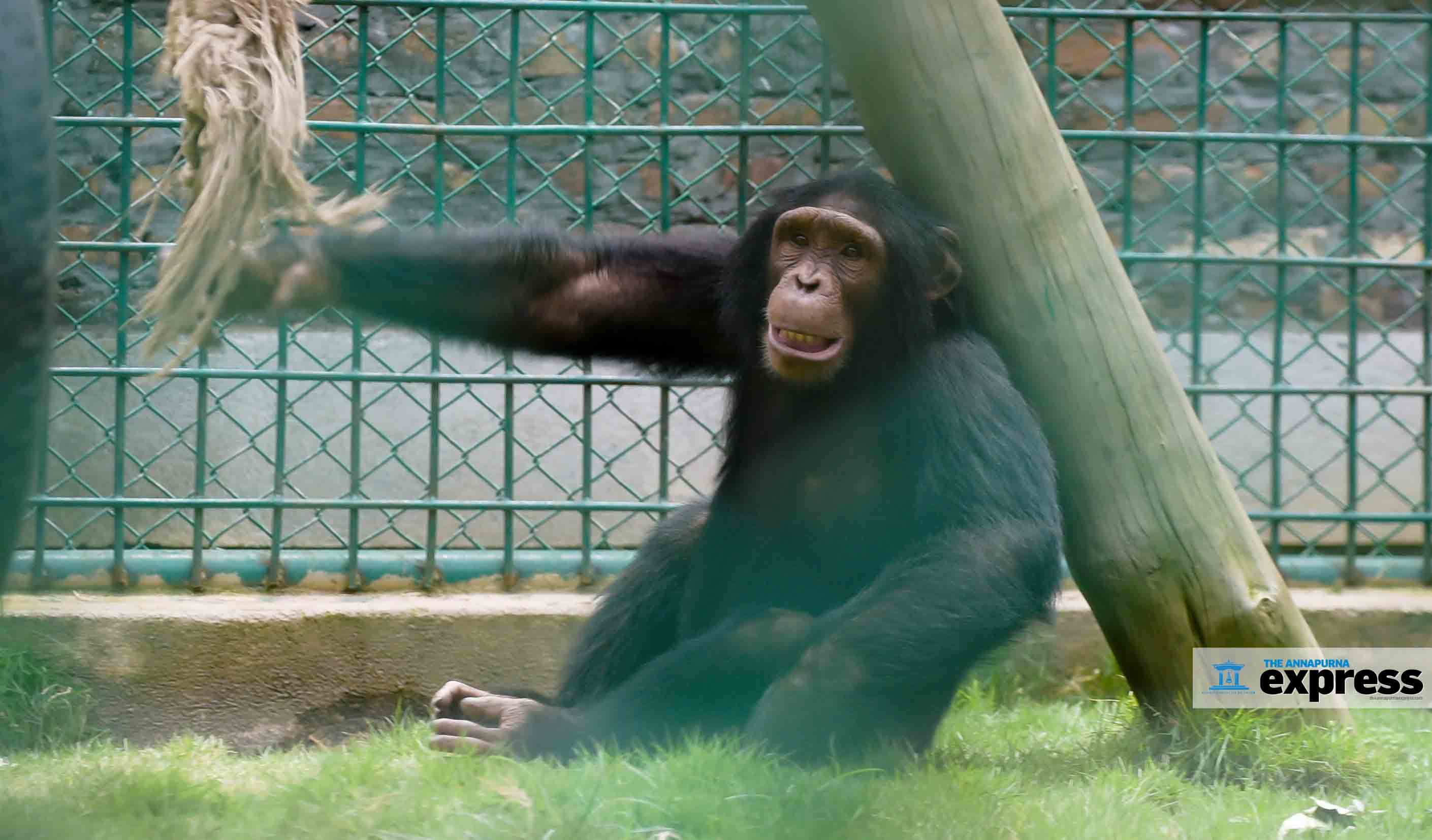
Deeply moved by this distressing revelation, I felt compelled to visit the zoo to capture the somber reality of these tigers through my camera lens.

Regrettably, it wasn’t just the tigers suffering under such conditions; all the animals and birds in the zoo seemed to endure similar hardships. They appeared visibly malnourished, being inadequately fed, and confined to cramped spaces.

As a photographer, it was disheartening to witness the state of these beautiful creatures, and I couldn’t help but feel a sense of urgency to raise awareness about the concerning conditions they are forced to endure at the central zoo of Nepal.

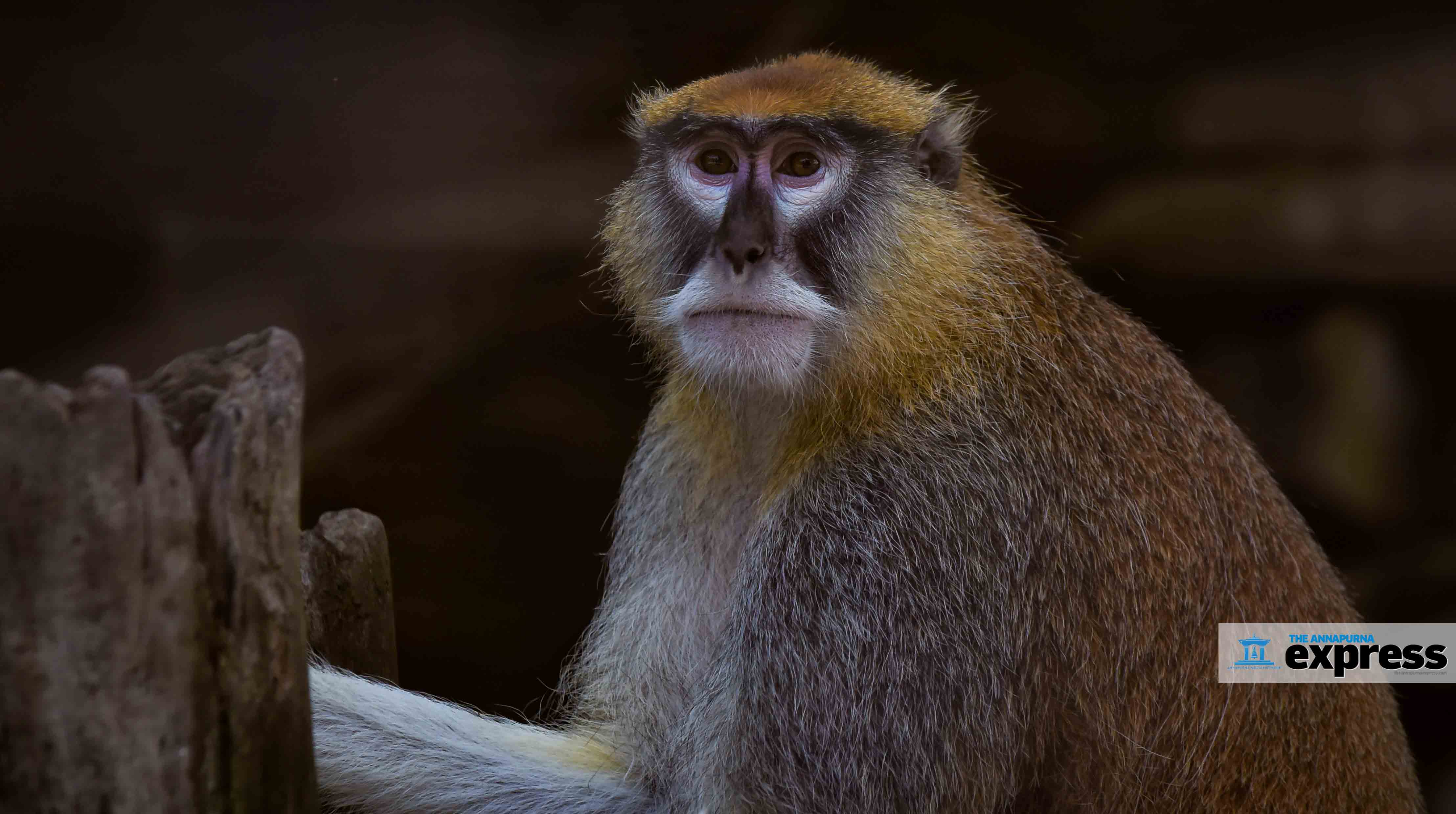

Photo Feature: Preparing for polls
Election fever has gripped Kathmandu and the rest of the country. Candidates and their supporters are out campaigning, meeting their constituents and canvassing for votes. Election posters, flags, and fliers can be seen everywhere.
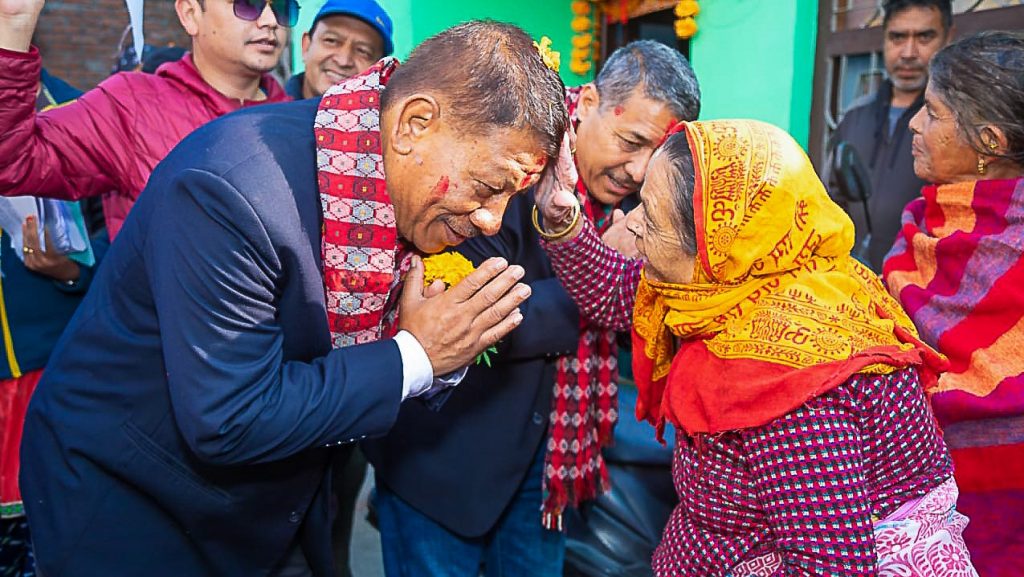 The Election Commission is also doing its part. Voting materials are ready and being shipped across the country. The poll body is also holding mock elections to reduce invalid ballot numbers, and meeting with celebrities and businesspersons as part of its voter awareness drive.
The Election Commission is also doing its part. Voting materials are ready and being shipped across the country. The poll body is also holding mock elections to reduce invalid ballot numbers, and meeting with celebrities and businesspersons as part of its voter awareness drive.
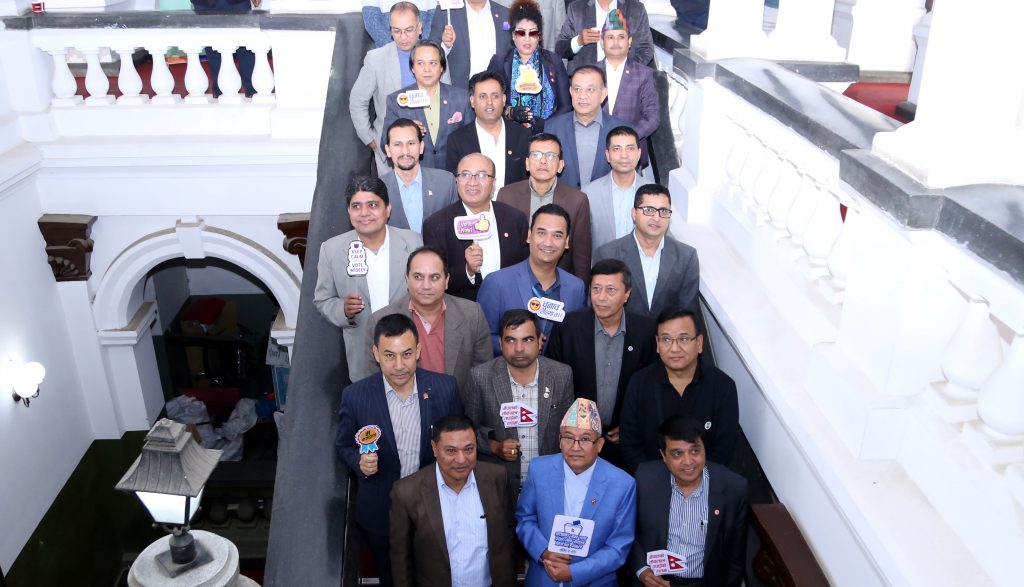 There are nearly 18 million eligible voters this time. Their ballots will decide who will occupy 165 of the 275 seats in the House of Representatives under first-past-the-post category. The remaining 110 lawmakers will be elected under the proportional representation electoral system. The November 20 vote will also elect 330 assembly members in seven provinces.
There are nearly 18 million eligible voters this time. Their ballots will decide who will occupy 165 of the 275 seats in the House of Representatives under first-past-the-post category. The remaining 110 lawmakers will be elected under the proportional representation electoral system. The November 20 vote will also elect 330 assembly members in seven provinces.
 For election security, Nepal Police is set to mobilize 186,693 personnel in all seven provinces. Likewise, Nepal Army and Armed Police Force are set to deploy 75,000 and 35,000 of their personnel. Additionally, the Nepal Police has also hired 115,000 temporary police.
For election security, Nepal Police is set to mobilize 186,693 personnel in all seven provinces. Likewise, Nepal Army and Armed Police Force are set to deploy 75,000 and 35,000 of their personnel. Additionally, the Nepal Police has also hired 115,000 temporary police.





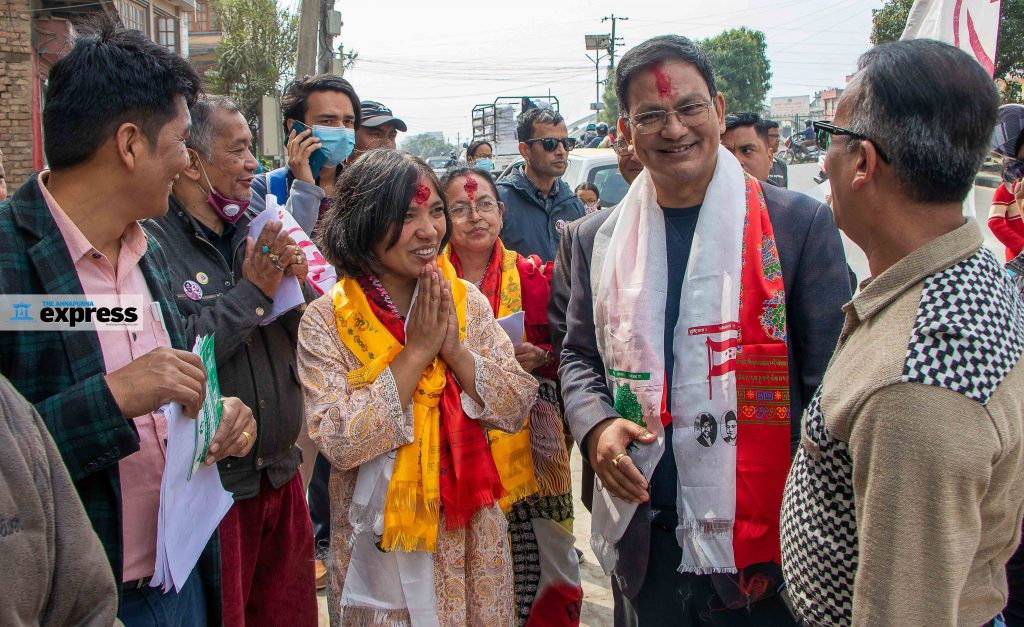
Photo Feature | Pain for pleasure
Kabin Raj Puri is in an ecstatic trance. Two thick metal hooks have just been pierced clean through the flesh on his back and he is being raised above ground with a pulley system. It was not a beautiful sight to behold, but the man performing this act was in pure bliss.  At the venue of Nepal Inked Tattoo Festival in Thamel, one expects to see and meet people who are unconventional, bizarre even. You see a guy who has covered his entire body in tattoos, there is another one with so many piercings and in so many places you thought impossible and next to him is the person who has tattooed the whites of his eyes.
At the venue of Nepal Inked Tattoo Festival in Thamel, one expects to see and meet people who are unconventional, bizarre even. You see a guy who has covered his entire body in tattoos, there is another one with so many piercings and in so many places you thought impossible and next to him is the person who has tattooed the whites of his eyes.  But on this particular day, Puri’s suspension act seemed to be the event’s main highlight.
But on this particular day, Puri’s suspension act seemed to be the event’s main highlight.  With the expert guidance of suspension artist Alex Pareiro and his team, Puri, a tattoo artist by profession, was swinging in the air with two metal hooks yanking at his flesh in his back. In the background, there was a steady hum of tattoo guns, metal music and mixed whispers of crowds gathered to witness the stunt, but all eyes were fixed on Puri.
With the expert guidance of suspension artist Alex Pareiro and his team, Puri, a tattoo artist by profession, was swinging in the air with two metal hooks yanking at his flesh in his back. In the background, there was a steady hum of tattoo guns, metal music and mixed whispers of crowds gathered to witness the stunt, but all eyes were fixed on Puri.  At one point, he starts swinging and spinning wildly shouting “This is so much fun! I fell no pain at all.” He seemed more than happy to pose for photographs.
At one point, he starts swinging and spinning wildly shouting “This is so much fun! I fell no pain at all.” He seemed more than happy to pose for photographs.  When he was finally lowered after 20 minutes or so, I talked to Puri about his act. The metal hooks from his back were removed and he was bleeding. Naturally, I asked him if it was painful. “No, it was a pleasurable experience,” he told me. “Up there, you get high.”
When he was finally lowered after 20 minutes or so, I talked to Puri about his act. The metal hooks from his back were removed and he was bleeding. Naturally, I asked him if it was painful. “No, it was a pleasurable experience,” he told me. “Up there, you get high.”  Our conversation was brief. I was astonished, for it was my first time seeing a person performing a body suspension act before my eyes. The fact that it was Puri’s first body suspension act only left me further tongue-tied.
Our conversation was brief. I was astonished, for it was my first time seeing a person performing a body suspension act before my eyes. The fact that it was Puri’s first body suspension act only left me further tongue-tied. 
Photo Feature | Harvest festival in Bhaktapur
Rainfall played a spoilsport for this year’s Dashain. While the festival may be over, it seems as though monsoon is still on, and at the receiving end are the farmers. 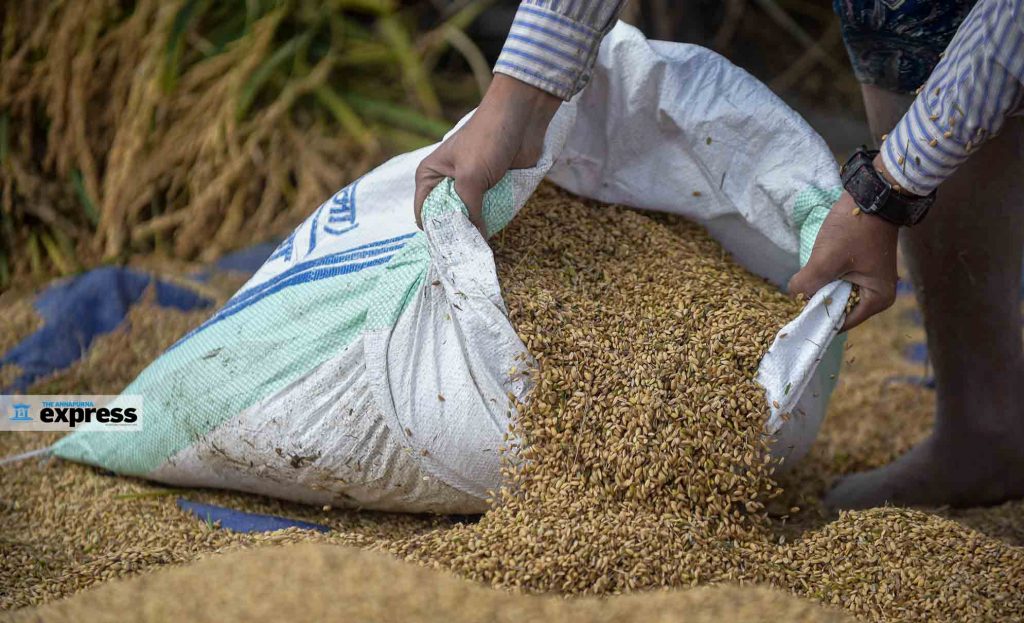 Every year, farmers harvest paddy before Dashain, but they could not this year.
Every year, farmers harvest paddy before Dashain, but they could not this year.  “The gods are angry with us,” an old farmer told me as he was drying his paddy harvest in Bhaktapur on a recent afternoon.
“The gods are angry with us,” an old farmer told me as he was drying his paddy harvest in Bhaktapur on a recent afternoon.  The sun was out that day but with the current weather, the sky could grow overcast and the clouds could burst any time. So the old farmer was understandably weary.
The sun was out that day but with the current weather, the sky could grow overcast and the clouds could burst any time. So the old farmer was understandably weary. 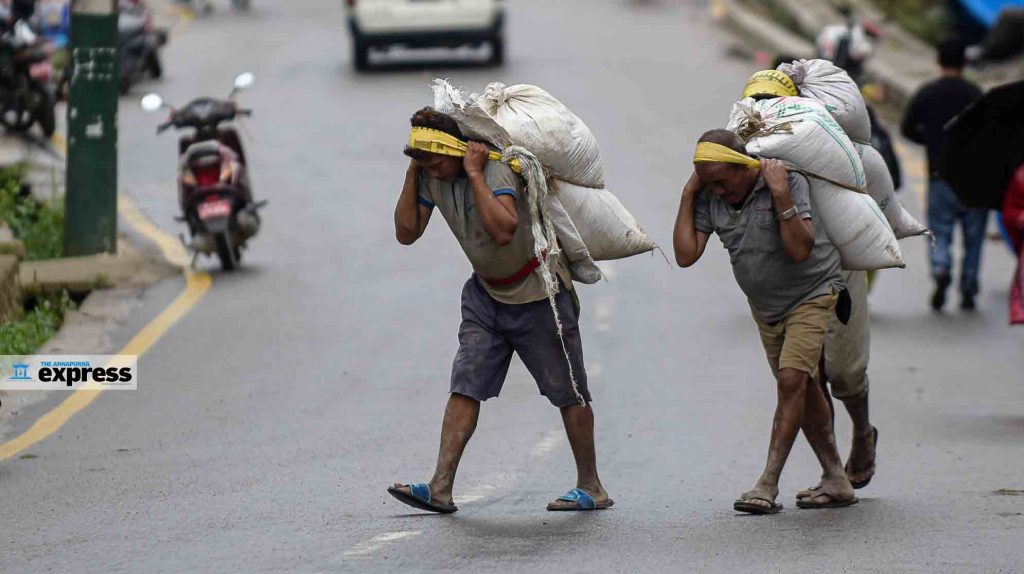 The rice paddies in Bhaktapur would have been empty by this time in the previous years. I was told not even 10 percent of the harvesting has been completed this year.
The rice paddies in Bhaktapur would have been empty by this time in the previous years. I was told not even 10 percent of the harvesting has been completed this year.  “Crops have been badly affected by the rain and also by the recent hailstorm,” a woman told me.
“Crops have been badly affected by the rain and also by the recent hailstorm,” a woman told me. 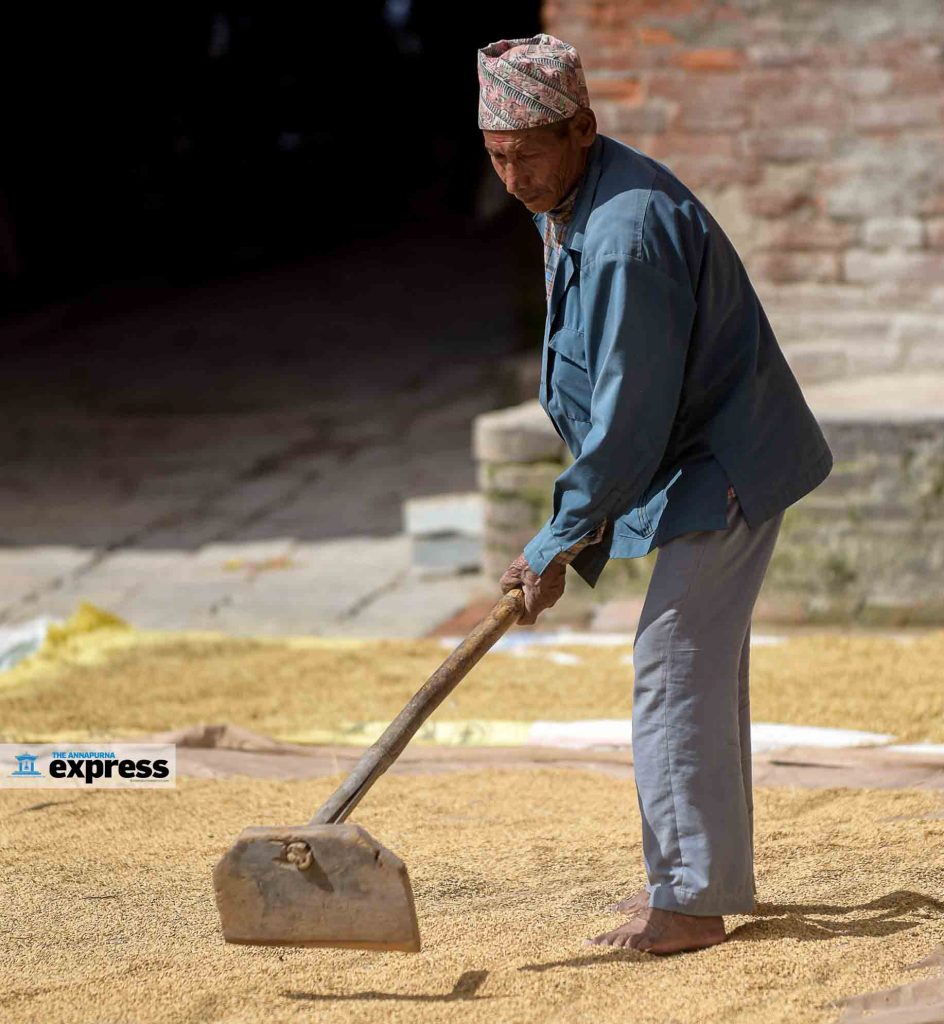 For farmers of Bhaktapur, harvesting season is a cause for celebration. This is how they have been ringing in the festival season every year. They drink plenty of chhyang (rice beer), beaten rice, and vegetables and gather harvest bounty, the fruits of their labor.
For farmers of Bhaktapur, harvesting season is a cause for celebration. This is how they have been ringing in the festival season every year. They drink plenty of chhyang (rice beer), beaten rice, and vegetables and gather harvest bounty, the fruits of their labor.  The harvest season came late this year. Still, the farmers were making the most of it. I was offered some chhyang and beaten rice on the condition that I take their issue to the government.
The harvest season came late this year. Still, the farmers were making the most of it. I was offered some chhyang and beaten rice on the condition that I take their issue to the government.  “Tell the government that we lack fertilizers every year,” a genial farmer told me. I promised to do what I can.
“Tell the government that we lack fertilizers every year,” a genial farmer told me. I promised to do what I can.














